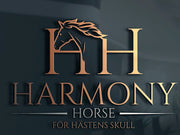The saddle area is the part of the horse's back that the saddle is placed on for riding. This area begins behind the shoulders and ends with the 18th thoracic vertebra. Only a rider sitting in this position can influence the horse well and does not restrict its movements. As simple as that.
Why is it important to find the right saddle area?
It would be easier for the horse if we sat on the cross - but have you ever tried dressage riding or jumping from that position? Okay, to be serious. Note that the scapular cartilage should also sit in front of the saddle. The rider's weight is placed above the 12th/13th thoracic vertebra and distributed across the entire saddle further forward and rearward. To "support" the rider's weight, there are about 10 pairs of ribs under the saddle area that are connected to the sternum. The horse is almost like a "barrel" we sit on.
Another criterion for defining the saddle area is the length and width of the spinous processes. The meniscal processes play a special role because they protrude from the upper line and are not embedded in muscles like the other thoracic vertebrae. The entire structure is attached to the ligaments in the neck. The back and stomach muscles primarily move the horse, they are not made to bear weight. This is why these muscles must be perfectly elastic to do their job. Between the shoulder blades, the horse's front is built like a hammock, suspended by ligaments and muscles, which leads to excellent shock-absorbing properties and helps to carry the rider.
As the shoulder blades are very mobile and flexible body parts, the horse is likely sensitive to pressure and mechanical stimuli there. Imagine you were asked to carry two buckets of water attached to a frame on your shoulders. But it's too short and presses against the sides of your arms making it hard to move. As a result, your neck and shoulder muscles would tense up. And this is exactly how the horse reacts, which is why the saddle must be placed behind the shoulders.
The muscles under the saddle include the following: m. trapezius, m. latissimus dorsi, m. longissimus dorsi and m. iliocostalis. The two more superficial muscles trapezius and latissimus are affected first by the saddle. Both are responsible for moving the front end. The latissimus also affects the pelvis and rear through its connection to the lumbar spine.
Why is the saddle area changing - is my saddle still in the correct position?
The saddle area depends on several factors. The horse's feeding, grooming or age as well as health problems, training and equipment can affect the saddle area. When it comes to gear, it's not just the saddle that can cause problems as a stable saddle can also rub when it's too tight, too long or too short.
However, we need to distinguish between the different degrees of influence on the saddle area. Of course, the training including the rider and the equipment exerts the greatest effect on changes in this area. Feeding, care and age have a more indirect influence.
Hypersensitive or a genuine reason to complain
Our horses are sensitive animals that express their discomfort directly. A responsible horse person must always observe the whole horse and keep track of the slightest change. When these changes continue for a long time, check closely what is wrong. And don't forget to consider every single factor!
You are not meant to overreact to every "mood" of your horse. But with sensitivity and true realism, you have the chance to detect and solve any problem in time before it can cause real damage. It includes some sensitive questions: Is there something wrong with my training? Is it perhaps too much for my horse? Do I need to seek help from a trainer?
Honesty lasts the longest
When you work with other people's horses - as a trainer, saddler or therapist - it is natural for you to check the horse's entire background. So be honest yet empathetic and respectful of the horse owners. In most cases, they want the best for their horses and simply don't see the flaws in their daily routine.
It is a sensitive subject. Nevertheless, it is very important to us as it is about horses that depend on our care.
How do I find the saddle area on my horse?
The best method is to palpate:
Front: Place the hand on the upper edge of the shoulder blade. With fairly fat horses, you need a little finer feeling. Go along the back edge of the shoulder blade. At about the same height as the hip bone, you will feel the "bulge" of the scapular cartilage. The saddle area starts behind it.
Back: At about the same height as the shoulder joint, you can palpate the back edge of the last rib. Follow this rib up towards the spine (the ribs draw a slight arc forward). Once you have reached the spine, you have found the end of the saddle area. In the beginning, you should mark both the beginning and the end of the area with chalk to train your eye.


